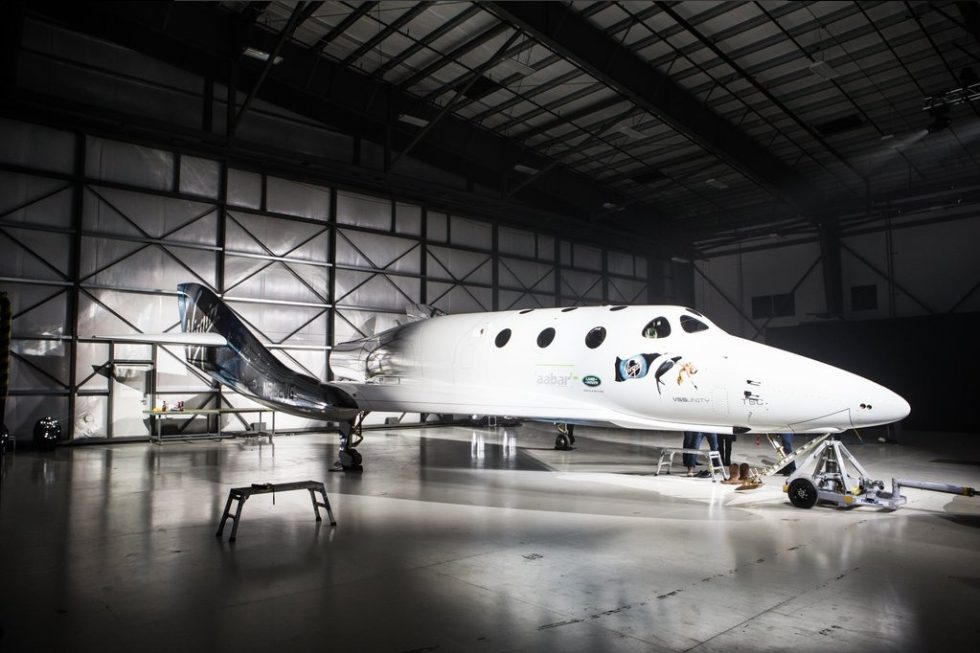
It’s been 16 months since SpaceShipTwo crashed into the Mojave Desert and killed the vehicle’s co-pilot Michael Alsbury. On Friday, Virgin Galactic sought to move on from that accident and put the company firmly back on a path toward delivering tourists to the edge of space by unveiling a new version of its spacecraft named VSS Unity.
“I’m really proud of the entire team,” said George Whitesides, chief executive of Virgin Galactic, in an interview with Ars. “It’s a bunch of folks who came to this company to open space up, and they’re not going to be deterred by the accident. They’ve been working really hard for a year and a half to finish this vehicle.”
The new spacecraft is in many ways the same as the original SpaceShipTwo, dubbed Enterprise, Whitesides said. It has the same basic airframe and propulsion systems. The biggest change is to the feather locking system, used to aid in the descent of the spacecraft. During the fatal flight on Oct. 31, 2014, Alsbury prematurely deployed the system while still making a powered ascent. Unity now includes a mechanical pin to prevent the feather lever from moving when the vehicle is flying in an unsafe flight regime.
-
During the flashy unveiling in California Sir Richard Branson rode in the Land Rover that pulled the VSS Unity into view.Virgin Galactic
-
The business end of Unity is shown in Virgin Galactic's Mojave, Calif.-based hangar.Virgin Galactic
-
Another view of the revamped spacecraft.Virgin Galactic
-
VSS Unity is the first vehicle to be manufactured by The Spaceship Company, Virgin Galactic's wholly owned manufacturing arm.Virgin Galactic
-
White Knight Two carries the first SpaceShipTwo during a glide test.Virgin Galactic
-
Virgin Galactic's first SpaceShipTwo during its first supersonic powered flight.Virgin Galactic/Mars Scientific
-
WhiteKnightTwo and the first SpaceShipTwo on get ready for take off on the runway in Mojave.Virgin Galactic
-
The first SpaceShipTwo during a glide flight.Virgin Galactic
During a flashy unveiling ceremony Friday in Mojave, California, where Virgin Galactic and other new space companies have construction facilities and test their hardware, the company said it was formally moving from the “build” phase to the “test” phase. Engineers will conduct ground tests during the next couple of months before flight tests can begin.
SpaceShipTwo is designed to be carried to an altitude of 14 kilometers by its carrier aircraft, White Knight Two. At that point it detaches and the spacecraft’s rocket engines fire for a little more than a minute, allowing the vehicle to coast up to its maximum altitude above 100 kilometers.
After completing ground testing and integrated vehicle testing, the company will pair Unity with White Knight Two before moving to glide tests and finally powered test flights. Whitesides was careful not to make any firm predictions on when test flights will begin.
Virgin Galactic still has a ways to go. Although it made 55 test flights, during its powered flight tests Enterprise only reached a maximum altitude of 22 kilometers. Critically during the upcoming tests, the company must observe how the vehicle’s rocket motor dissipates heat from the rear of the spacecraft and how it behaves when breaking the sound barrier both during ascent and descent. Company officials have said they will fly passengers—there will be room for six customers on a flight in addition to two crew members—only when they are confident they can safely do so.
Before the fatal accident 16 months ago, Virgin Galactic had signed up 700 customers at a cost of $200,000 to $250,000 (£140,000 to £170,000) per ticket. Although a few dozen people asked for their money back after the crash, Whitesides said most people stuck with the company, and additional sales have made up for those who sought refunds.
Whitesides said the company is not in a race against competitors. Virgin Galactic began developing SpaceShipTwo more than a decade ago, and other companies have more recently entered the space tourism market.
XCOR has a hangar nearby in Mojave and is developing the Lynx spacecraft to take customers into space. And World View is building a balloon that can take passengers to an altitude of 30 kilometers. Both of those companies could be offering commercial services by the end of 2017. Blue Origin, too, has been conducting successful test flights of its New Shepard suborbital spacecraft.
reader comments
54